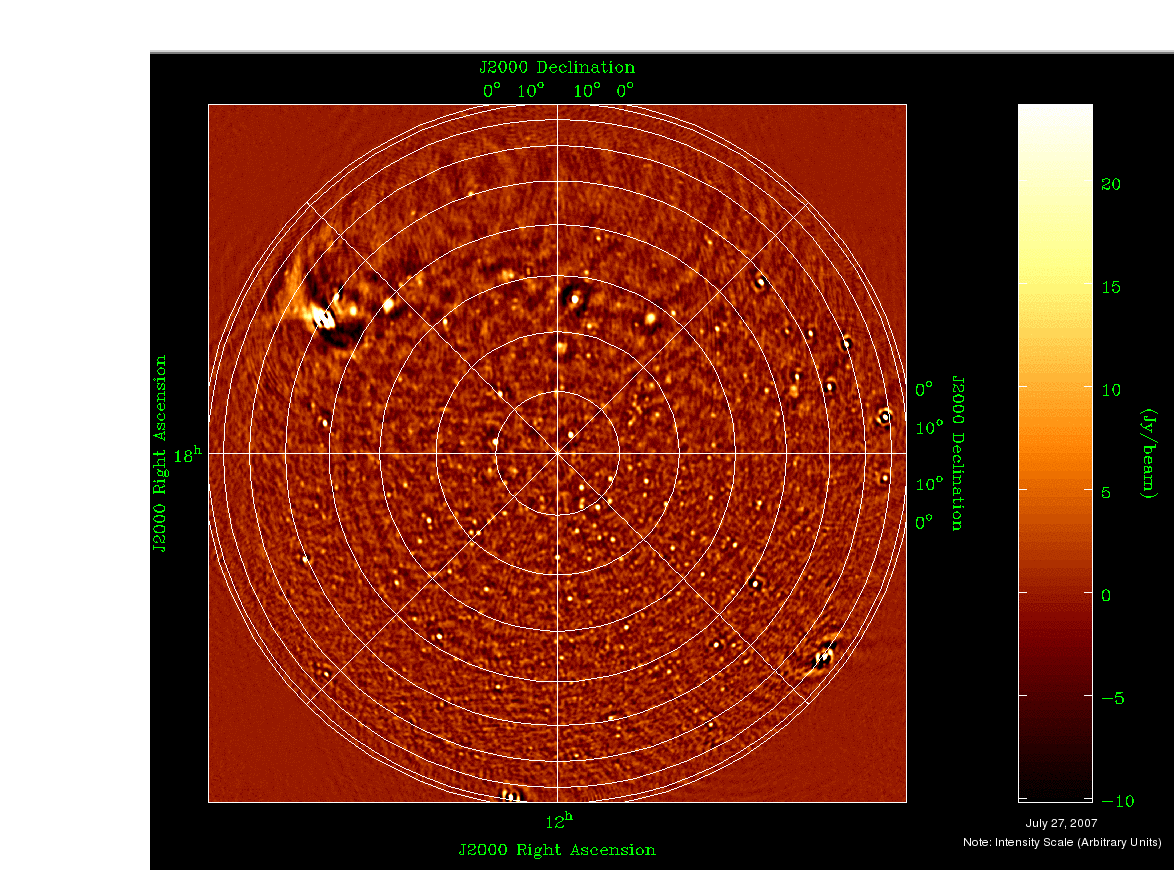| Description: | These are first of a series of initial deep all sky wide field (full hemisphere centered on North Celestial Pole) dirty LOFAR/CS1 images with about 50' resolution, showing more than 400 radio sources and produced by calibrating the data with the Black Board Self calibration (BBS - intended final LOFAR processing system). Each image is made using a day of observations carried out in 36 sub-bands (each 0.15 MHz wide) in the frequency range 38-62 MHz with 16 single LBA (Low Band Antenna) dipole pairs phased at NCP and spread to have a maximum baseline of 485 m. The data processing steps include initial flagging, solving simultaneously for the complex gains (J Jones) in the direction of the two brightest sources Cas A and Cygnus A. The contribution of these two sources were subsequently subtracted from the visibilities and the residuals were corrected for the complex gain in the direction of Cas A. Subsequently AIPS++ imager was used (with the W-projection algorithm) to transform the calibrated visibilities into all sky images. The images have not been corrected for the primary beam of the individual dipoles. During the entire data processing only the projected baselines longer than 70 m were used. Approximations which have gone in during processing include averaging the visibilities within each sub-band before calibration and assuming same flux densities for two point source sky model consisting of Cas A and Cygnus A over the entire frequency range. Future processing would aim for more accurate calibration including taking care of these approximations. The total bandwidth used in each image is about 5 MHz.
The image shows that the source Cas A has been subtracted quite satisfactorily but Cygnus A residuals are still there to a significant level. This is most likely due to the fact that we also used data when Cygnus A is very close to the horizon where its signal to noise ratio becomes very low for accurate calibration. This residual is also the most probable reason for apparently slightly less number of sources seen in the top half of the image compared to the bottom half. The sidelobes of PSF of strong sources like Tycho, Taurus, Virgo etc. are evident. The movement of the Sun present in the right bottom corner can also be easily noticed. The intensity scale for the images is in arbitrary units. |

